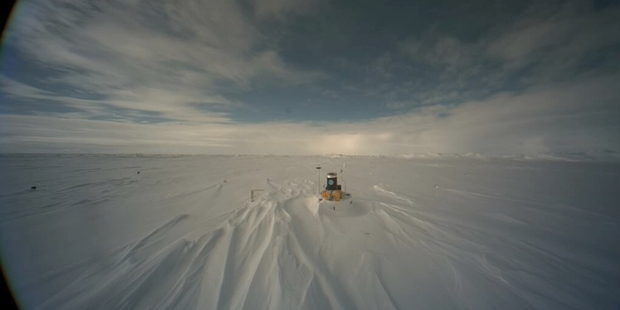All eyes on pivotal voyage

For a ship on a mission of worldwide importance, the Yong Sheng is a distinctly unimpressive sight.
The grey and green hull of the 19,000-tonne cargo vessel, operated by China's state-owned Cosco Group, is streaked with rust, while its cargo of steel and heavy equipment would best be described as prosaic.
Yet the Yong Sheng's journey, which began on August 8 from Dalian, a port in northeastern China, to Rotterdam is being watched with fascination by politicians and scientists.
They are intrigued, not by its cargo, but by its route - for the Yong Sheng is headed in the opposite direction from Holland and sailing towards the Bering Strait that separates Russia and Alaska. Once through the strait, it will enter the Arctic Ocean, where it will attempt one of the most audacious voyages of modern seafaring: sailing through one of the Arctic's fabled passages, the Northern Sea Route.
The passage, which hugs the coast of northern Russia, and its mirror route, the Northwest Passage, which threads its way through the islands and creeks of northern Canada, have claimed the lives of thousands of sailors who tried for centuries to cross the Arctic in an attempt to link the ports of the Far East and Europe by sailing via the North Pole.
Thick pack ice, violent storms and plummeting temperatures thwarted these endeavours.
But global warming has transformed the Arctic in recent years and its summer ice cover has dropped by more than 40 per cent over the last few decades, raising the prospect that it may soon be possible to sail through the Arctic's sea routes with ease - a notion that is proving irresistible to shipping lines, not to mention mining companies as well as oil and gas exploration firms. All believe the region is ripe for exploitation.
Several fairly large ships have already sailed the Northern Sea Route. However, the voyage of the Yong Sheng, backed by the Chinese Government, has special significance. This is the first attempt by the world's biggest exporter to exploit the Arctic's disappearing ice to reach its biggest market - the European Union.
"We always knew global warming would affect the planet first in the Arctic, but we have been floored by the rapidity of that change," said Mark Serreze, director of the US National Snow and Ice Data Centre in Colorado.
"Temperatures have risen dramatically. At this rate, I would expect the Arctic to be completely free of ice in summer by around 2030. That is why everyone has become so interested in the region."
The attraction for China in opening up the Northern Sea Route is straightforward. According to Cosco, the Yong Sheng's 5440km journey will take about 30 days, shaving two weeks off the traditional route between Asia and Europe via the Suez Canal.
"The Arctic route can cut 12 to 15 days from traditional routes, so the maritime industry calls it the Golden Waterway," Cosco said when it announced the Yong Sheng's voyage.
Making such cuts in transport times means major savings in fuel and lower costs for its products, hence China's new enthusiasm for all things polar.
China, whose total foreign trade was worth US$3.87 trillion ($4.77 trillion) last year, can see clear economic benefits from exploiting the warming that is gripping the planet and shrinking its northern sea ice shelves.
And shipping figures certainly look encouraging. Russian authorities said last week they had already granted permission for more than 370 ships to sail the route this year.
In 2012, only 46 ships sailed the entire length of the passage from Europe to Asia, while in 2010 only four vessels made the voyage.
The seas around the North Pole may be losing their summer ice cover but there is still the ever-present danger of icebergs and drifting slabs of pack ice.
"It is very unlikely that the Yong Sheng will go through these waters on its own," said Serreze.
"The Russians have the best, most powerful armada of ice-breakers. Some of these are huge nuclear-powered vessels, and I would expect one of these will have been hired to escort the Yong Sheng on the main part of its journey."
For the foreseeable future, the Northern Sea Route will therefore be open for only a few weeks in summer and still require ice-breaker escorts.
Then there is the major expansion of the Panama Canal, expected to be completed by 2015. When that happens it will be possible to take ships that have more than double the upper cargo capacity on vessels currently allowed in the canal. Again, the major beneficiary is expected to be China with its voracious export plans. The costs of shipping its goods to the eastern US are predicted to drop by more than 30 per cent as a result of the Panama's expansion.
HEADLINES
- Do shipping markets want Biden or Trump for the win?
- All 18 crew safe after fire on Japanese-owned tanker off Singapore
- Singapore launching $44m co-investment initiative for maritime tech start-ups
- Cosco debuts Global Shipping Industry Chain Cooperation Initiative
- US warns of more shipping sanctions
- China continues seaport consolidation as Dalian offer goes unconditional